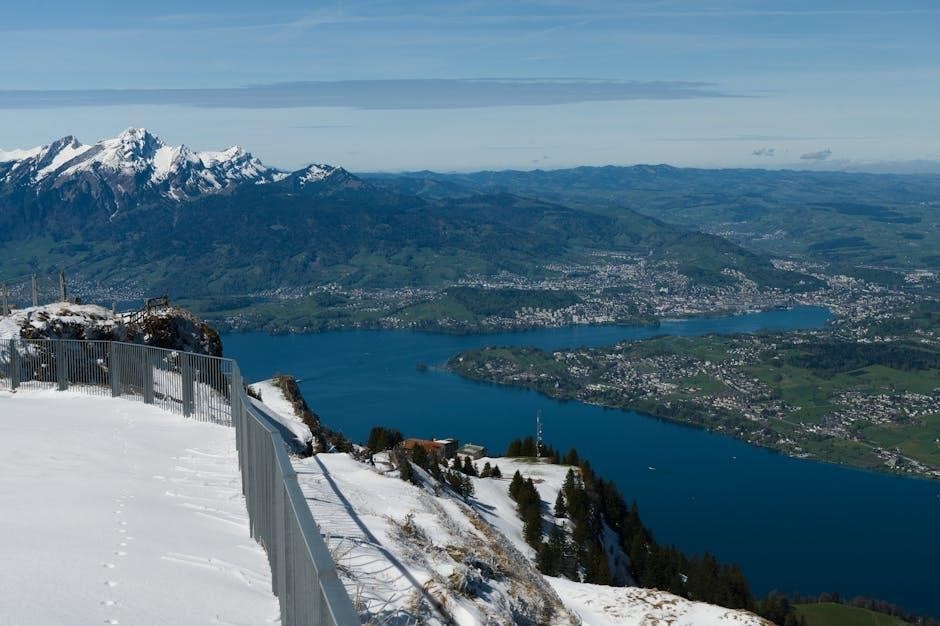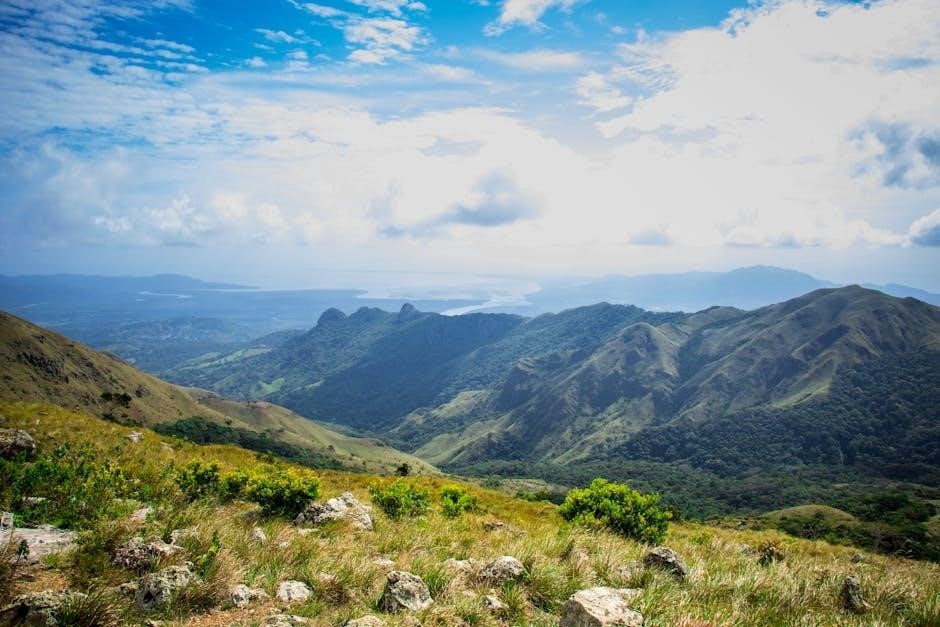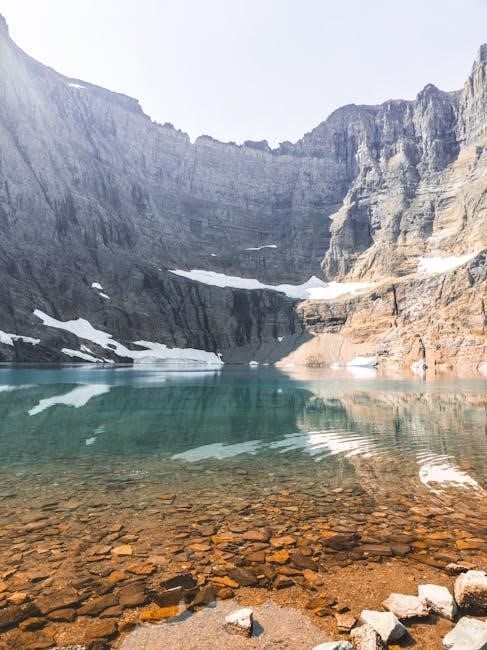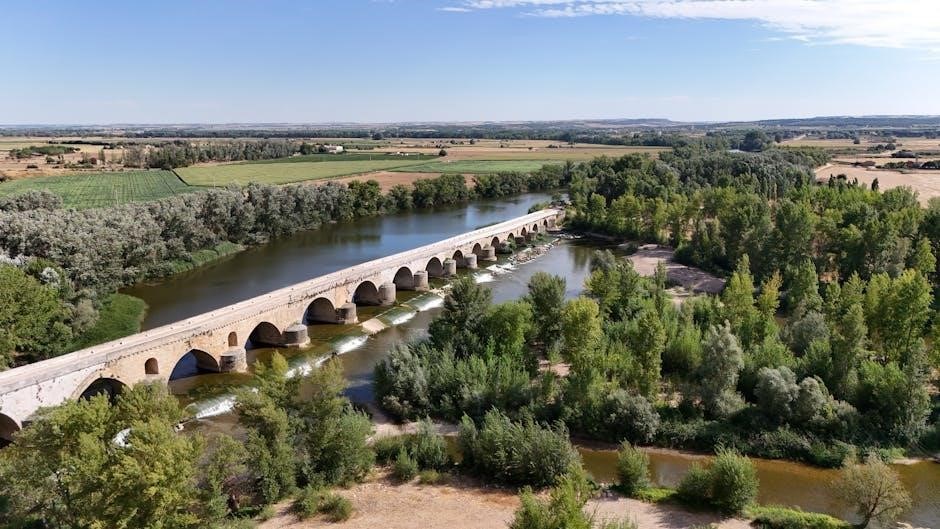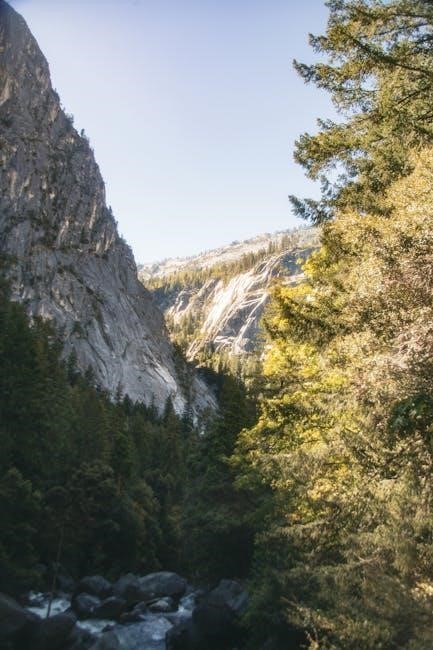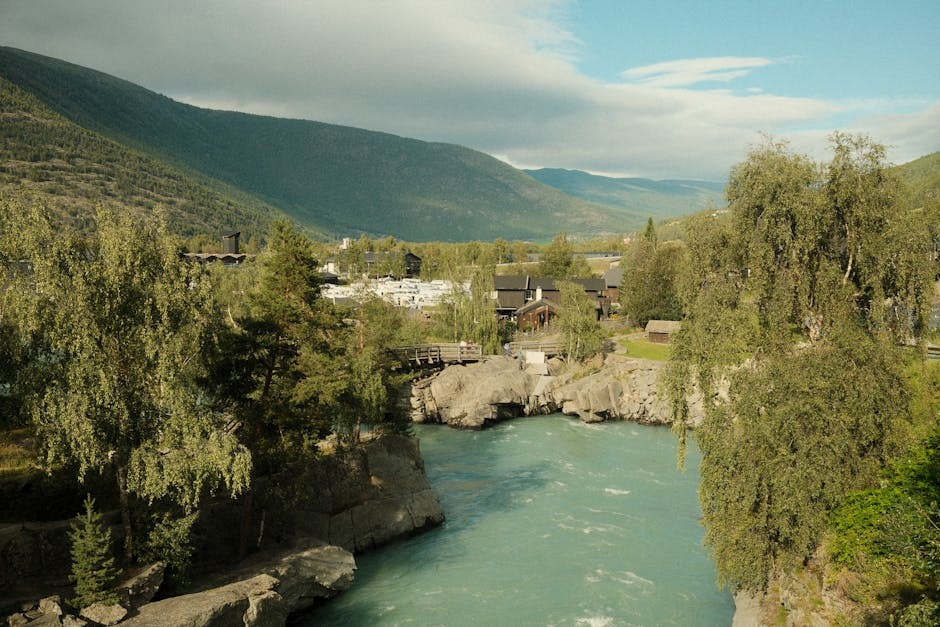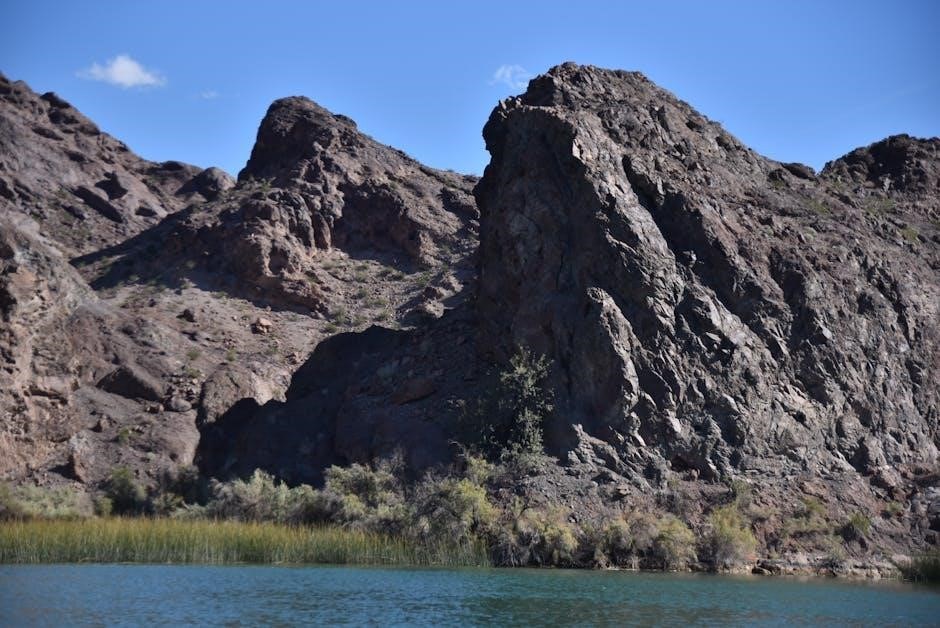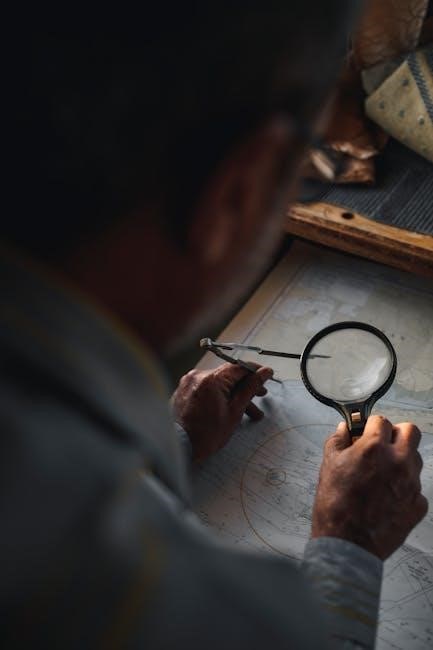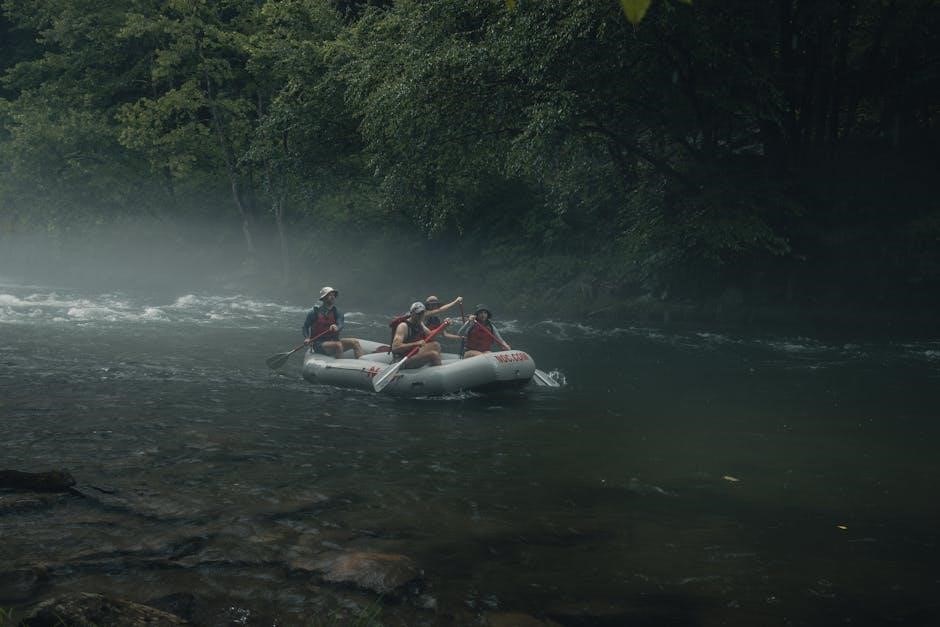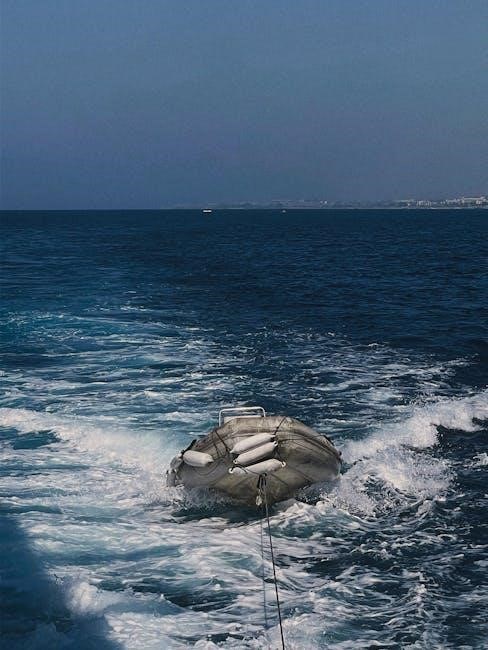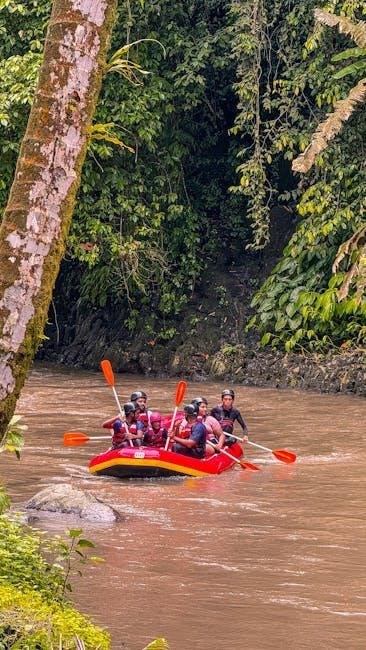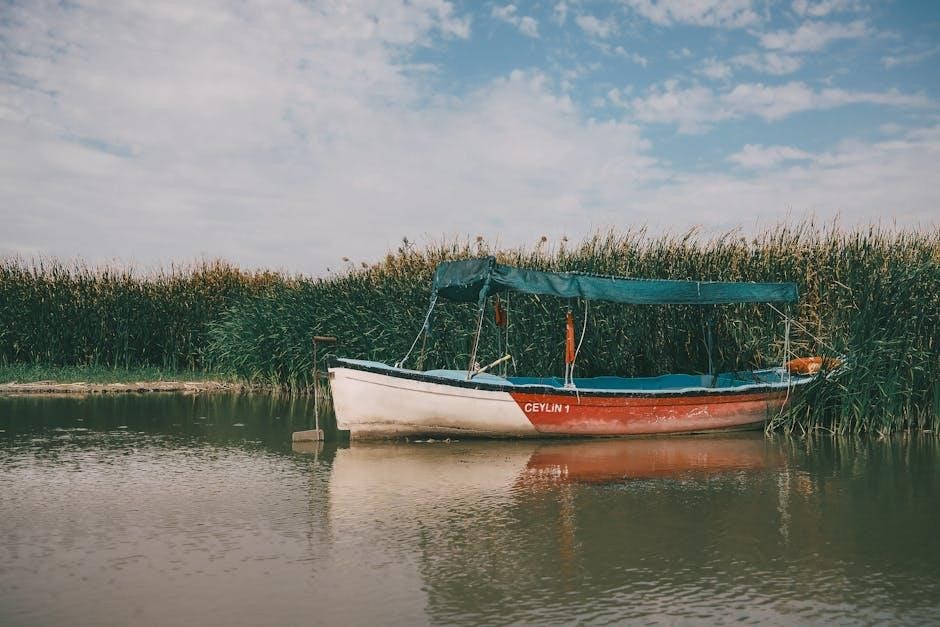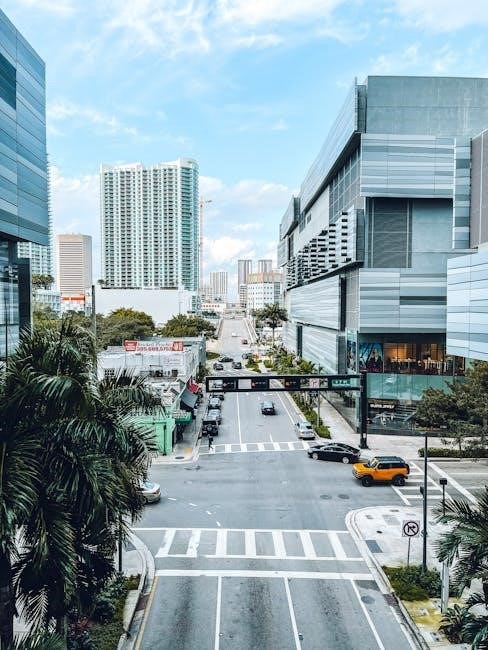Black Desert Alchemy is a life skill allowing players to craft powerful elixirs, potions, and stones. It enhances gear, aids combat, and offers profitable opportunities.
1.1 What is Alchemy in Black Desert?
Alchemy in Black Desert is a life skill that enables players to craft various items, such as elixirs, potions, and alchemy stones. These items enhance character performance, provide combat advantages, and improve gear efficiency. Alchemy requires specific materials and recipes, combining reagents like Clear Liquid Reagent and Shining Powder to create powerful outcomes. It also involves crafting and upgrading alchemy stones, which boost stats or provide protection. Alchemy is a versatile skill, offering both practical benefits for progression and opportunities for profit through crafting and trading. Mastery requires practice, resource gathering, and understanding complex recipes and processes.
1.2 Importance of Alchemy in the Game
Alchemy is a cornerstone of Black Desert, offering essential items that enhance gameplay. Elixirs boost stats, alchemy stones protect gear, and crafted items aid progression. It supports combat, life skills, and economy, making it vital for both PvE and PvP. High-quality alchemy products are sought after, enabling profitable trading. Mastery of alchemy unlocks powerful upgrades and exclusive recipes, giving players a competitive edge. Its versatility and demand make it a key skill for long-term success and enjoyment in the game world.

Crafting Alchemy Stones
Crafting alchemy stones involves combining specific materials to create powerful tools that enhance gear and provide combat benefits. The process requires precise recipes and alchemy expertise.
2.1 Recipe for Alchemy Stones
The recipe for crafting alchemy stones requires precise materials. Combine 9 Shining Powder, 6 Sinner’s Blood, 10 Clear Liquid Reagent, 10 Pure Powder Reagent, and 7 Powder of Time. These ingredients create a base stone. The result is either a white-grade imperfect stone or a Broken Alchemy Stone Shard, indicating successful crafting. Higher-grade stones are rare and typically require upgrading. The chance of crafting green-grade stones is extremely low, making upgrades the primary method for achieving higher tiers. This recipe is consistent across all alchemy levels, with success rates improving as skill increases.
2.2 Crafting Process and Tips
Crafting alchemy stones involves combining materials in a specific ratio. Start with Shining Powder as it’s essential for quality. Use an Alchemist’s Clothes set to boost crafting success rates. Prioritize Clear Liquid Reagent and Pure Powder Reagent for base materials. Avoid using Shimmering Powder to prevent errors. Craft in batches to optimize time and resources. Stop crafting when material costs outweigh benefits. For upgrades, focus on Sharp or higher tiers by using 150 durability tools. Utilize worker nodes for gathering materials like Fir Sap and Ash Sap to maintain efficiency and profitability.

Types of Alchemy Stones
Alchemy stones include Destruction Stones for offense, Protection Stones for defense, and Life Stones for support. Each type enhances gear and provides unique benefits in combat and progression.
3.1 Destruction Stones
Destruction Stones are offensive alchemy stones that enhance attack capabilities. They consume Ingots and Pure Crystals to grow stronger. These stones are highly sought after for their ability to significantly boost damage output, making them a favorite among PvE and PvP players. When upgraded, Destruction Stones can reach higher grades, offering even greater enhancements. Players often prioritize crafting and upgrading these stones due to their direct impact on combat effectiveness. The process involves feeding the stone specific materials to increase its power, with success rates influenced by the player’s alchemy level and the quality of materials used.
- Primarily used for offensive purposes.
- Consumes Ingots and Pure Crystals.
- Popular for their attack-boosting properties.
3.2 Protection Stones
Protection Stones are defensive alchemy stones that reduce damage and enhance survivability. They primarily consume Plywood and Sturdy Plywood to grow stronger; These stones are ideal for players focusing on tanky builds or PvP, as they significantly reduce incoming damage. While sturdy plywood offers better growth, it is rare and expensive, making regular plywood a more practical choice. Protection Stones are particularly valuable in high-risk combat situations and node wars. Upgrading these stones can further enhance their defensive properties, making them a staple for many players seeking to improve their survivability in challenging content.
- Focus on defensive capabilities.
- Primarily consume Plywood and Sturdy Plywood.
- Essential for tanky builds and PvP.
3.3 Life Stones
Life Stones are alchemy stones that enhance experience gain and are ideal for leveling up alchemy. They consume High-Quality or Special Crops, such as Special Strawberries or Purple Mushrooms, which can be farmed or purchased. These stones are particularly useful for players focusing on alchemy mastery, as they provide significant experience boosts. Nodes like Shuri Farm in Mediah and Ivero Cliff are excellent for farming these crops. Life Stones are also upgradeable, increasing their effectiveness. They are a cornerstone for efficient alchemy progression and are widely used by players aiming to maximize their alchemy potential.
- Enhance alchemy experience gain.
- Consume High-Quality or Special Crops.
- Farmed from nodes like Shuri Farm and Ivero Cliff.
- Upgradeable for increased effectiveness;
Upgrading Alchemy Stones
Upgrading alchemy stones requires Black Stones and Concentrated Magical Black Stones. Success rates vary, and higher enhancement levels increase stone effectiveness. Plan upgrades strategically to maximize benefits.
4.1 Upgrade Process and Materials
To upgrade alchemy stones, use Black Stones or Concentrated Magical Black Stones via the Black Spirit menu. Higher enhancement levels require more materials and have lower success rates. Shining Powder and other rare items may boost chances. Each upgrade attempt is random, with potential to fail or break the stone. Materials like Black Stone (Weapon) and Black Stone (Armor) are essential. Success increases stone stats, while failure risks degradation. Plan upgrades carefully, as high-tier stones are costly to repair. Using Cron Stones can mitigate failure risks, making the process more efficient for long-term progression.
4.2 Tips for Successful Upgrades
Enhance your chances of successful alchemy stone upgrades by using Cron Stones to reduce failure rates. Prioritize upgrading stones with high base stats, as they offer better results. Always ensure your gear is fully repaired before attempting upgrades. Use Sute Tea or Elixirs of Flowing Time to increase energy and efficiency. Start with lower-tier stones to practice and refine your strategy. Avoid over-investing in a single stone; diversify to minimize losses. Keep a stock of backup stones and materials to recover quickly from failures. Patience and strategic planning are key to achieving high-tier alchemy stones effectively.
Alchemy Tools and Gear

Alchemy Tools and Gear enhance crafting efficiency. Alchemist’s Clothes boost alchemy experience and speed. Advanced tools like the Balenos Traditional Alchemy Tool reduce crafting time significantly.
5.1 Alchemist’s Clothes
Alchemist’s Clothes are essential gear for alchemists, boosting experience and crafting speed. Higher-tier clothes (e.g., +2 or +3) significantly enhance efficiency. They are worth investing in but can be costly. Prioritize at least a +2 set to maximize gains without overspending. These clothes are crafted using materials like fabrics and gems or purchased from the marketplace. They are a cornerstone of successful alchemy, enabling faster progression and better crafting outcomes. Pairing them with Sute Tea further amplifies their benefits, making them indispensable for serious alchemists aiming to optimize their crafting and profit.
5.2 Advanced Alchemy Tools
Advanced Alchemy Tools, such as the Alchemist’s Tool, are crafted in Glish using materials like polished stone and scantling. These tools have 900 durability and reduce crafting time by 1 second, significantly boosting efficiency. Upgrading them further enhances performance, making them indispensable for high-level alchemy. They are especially valuable when paired with Sute Tea for optimal results. Investing in these tools is crucial for serious alchemists, as they streamline the crafting process and increase productivity, allowing for faster progression and higher profit margins in the competitive world of Black Desert alchemy.

Materials and Reagents
Essential materials include Shining Powder, Sinners Blood, Clear Liquid Reagent, Pure Powder Reagent, and Powder of Time. Farming or node management is crucial for obtaining these efficiently.
6.1 Key Materials for Alchemy
Key materials for alchemy include Shining Powder, Sinners Blood, Clear Liquid Reagent, Pure Powder Reagent, and Powder of Time. These are essential for crafting alchemy stones and high-end elixirs. Shining Powder is crucial for creating base materials, while Sinners Blood enhances potion effects. Clear Liquid Reagent and Pure Powder Reagent are fundamental for most recipes. Powder of Time is rare but vital for advanced crafting. Efficient farming or node management is necessary to gather these materials, as they are often in high demand and can be time-consuming to acquire in large quantities.
6.2 Farming and Node Guide
Farming and node management are crucial for gathering alchemy materials efficiently. Key nodes like Shuri Farm in Mediah and Ivero Cliff near Ancardo Inner Harbor provide high-quality crops. Assign workers to these nodes to collect materials like strawberries and mushrooms. Special crops, such as Special Strawberries and Purple Mushrooms, are ideal for feeding Life Stones. Nodes in regions like Kamasylvia also offer resources, though they may yield lower-grade items. Farming these materials ensures a steady supply, reducing reliance on the marketplace and saving time. Efficient node management and farming strategies are essential for advancing in alchemy and maximizing profitability.

Gaining Alchemy Experience
Farming Special Strawberries or crafting reagents like Clear Liquid and Pure Powder are effective ways to gain alchemy experience. Oils and elixirs also provide high XP.
7.1 Best Items for Experience
Special Strawberries are the most efficient item for gaining alchemy experience, especially when feeding Life Stones. They can be farmed or purchased from the market. Clear Liquid Reagent and Pure Powder Reagent are also excellent for early-level crafting. Oils, such as Flaming Elixir, provide high XP but require more materials. Crafting these items consistently helps level up your alchemy skill. Additionally, using Sute Tea or Elixirs of Flowing Time can boost your XP gain rate, making the process more efficient. Focus on these items to maximize your progress in alchemy.
7.2 Strategies for Leveling Up
Mass crafting lower-tier items like Special Strawberries and Clear Liquid Reagent is effective for early alchemy leveling. Use Sute Tea to boost XP gain. Focus on crafting oils and elixirs as you progress, as they offer higher XP. Set up worker nodes for materials like Fir Sap and Ash Sap to ensure a steady supply. Prioritize crafting items with high demand to balance XP gain and profit. Avoid wasting materials on low-value crafts. Utilize alchemy tools and gear, such as the Alchemist’s Clothes, to enhance efficiency. Consistency is key—regular crafting sessions will accelerate your skill progression.

Imperial Alchemy
Imperial Alchemy involves crafting high-demand elixirs and packages for sale to NPCs, offering significant profit margins. Focus on Weenie or Looney Elixirs for ease and profitability, using spreadsheets to track recipes and optimize production.
Imperial Crafting is an advanced form of alchemy focused on creating high-value packages for sale to Imperial NPCs. It requires precise recipes and materials, often involving rare elixirs and oils. This method offers substantial profit margins but demands careful planning and resource management. Players must balance material costs, crafting time, and market demand to maximize returns. Utilizing tools like spreadsheets and community guides can help optimize recipes and strategies, ensuring profitability in this competitive aspect of Black Desert’s economy.
8.2 Profitable Recipes and Strategies
Focus on crafting high-demand elixirs like Weenie and Looney Elixirs, which are sought after for their profitability in imperial packages. Use materials efficiently by sourcing rare components like fir sap and ash sap through node workers. Prioritize recipes with high demand and low competition, such as demihuman elixirs, which are popular in imperial crafting. Analyze market trends using community spreadsheets to identify gaps and opportunities. Balance quality and quantity to maximize returns, and adapt strategies as the market evolves. Stay competitive by refining recipes and optimizing material costs to ensure consistent profit margins in Black Desert’s dynamic economy;

Making Money with Alchemy
Alchemy offers lucrative opportunities by crafting high-demand items like elixirs and stones. Focus on imperial recipes, analyze market trends, and optimize material costs to maximize profits efficiently.
9.1 Crafting for the Marketplace
Crafting for the marketplace in Black Desert Alchemy involves creating high-demand items like elixirs, potions, and alchemy stones. Focus on recipes with strong market demand, such as demihuman elixirs or imperial crates, which offer high profit margins. Utilize materials like fir sap and ash sap, often required for advanced recipes. Process raw materials into polished stone or scantling to craft tools, enhancing efficiency. Analyze market trends to identify undersupplied items and adjust production accordingly. Balancing material costs and crafting time is key to maximizing profitability in this competitive space.
9.2 Analyzing Market Trends
Analyzing market trends is crucial for maximizing profits in Black Desert Alchemy. Check current prices of alchemy items like elixirs and stones on the marketplace. Identify high-demand, low-supply items to focus your crafting efforts. Use community resources, such as spreadsheets and Discord tools, to track trends and profitability. Timing is key—craft and list items during peak demand periods. Avoid oversaturating the market with common items, as this can lower prices. By staying informed and adapting to market changes, you can make informed decisions to optimize your crafting and selling strategies for consistent profit.
Additional Resources
Community guides, spreadsheets, and Discord communities provide valuable insights and tools for alchemy. These resources offer real-time updates, expert advice, and optimized crafting strategies for players.
10.1 Community Guides and Spreadsheets
Community guides and spreadsheets are essential tools for Black Desert alchemists. These resources, often created by experienced players, consolidate recipes, material requirements, and crafting strategies. They provide detailed breakdowns of imperial crafting values, profit calculations, and optimal farming routes. Spreadsheets like the ones shared on Reddit and Discord offer automatic updates and links to item databases, making recipe management efficient. Players can also find tutorials and tips for maximizing alchemy experience and profit. These community-driven resources are invaluable for both new and veteran players aiming to master alchemy.
10;2 Discord Communities and Tools
Discord communities are vibrant hubs for Black Desert alchemists, offering real-time support and shared knowledge. Channels like the Life Skill Discord provide access to tools such as Chibi Calc, which helps calculate recipe profitability and crafting strategies. Players can collaborate, share tips, and learn from experienced alchemists. These communities often host guides, updates, and resources for maximizing alchemy efficiency. Tools like crafting calculators and market analyzers are frequently shared, aiding in decision-making for both new and veteran players. Joining these communities enhances your alchemy journey, offering invaluable insights and networking opportunities to excel in the game.




